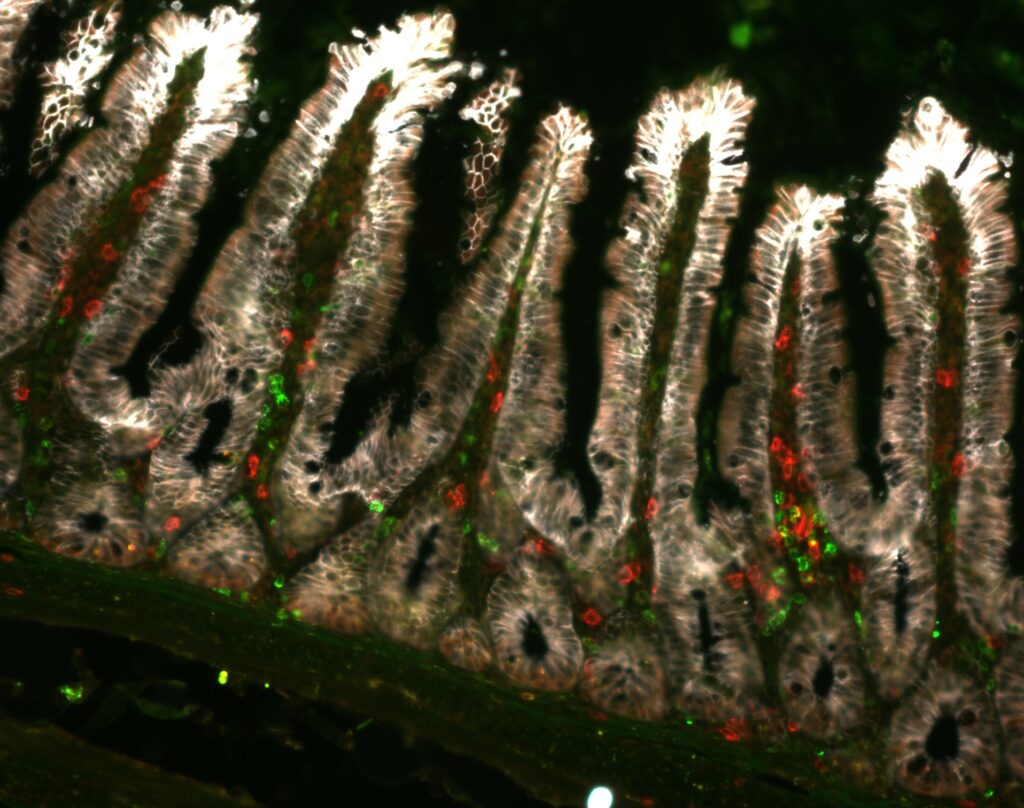First research paper from the lab
Happy to share the first research paper from my lab. Online today in the Journal of Experimental Medicine.

We have found a novel type of immune response triggered against adhesive bacteria known as SFB, which is tightly associated with gut epithelial cells. This research project originally began independently in the Abramson and Filipp labs and naturally transitioned to my own lab.
The project was in the lab primarily led by extremely talented postdoc, Tomáš Brabec.
SFB have the ability to induce the expression of MHCII on gut epithelial cells. MHCII is a crucial molecule, typically found in antigen-presenting cells that provide protein signals in MHCII-context to instruct T-cells to combat infections.
Our investigation initially focused on identifying the signals and cell sources that lead to the SFB-induced expression of MHCII in the intestinal epithelium. We then sought to understand the role of MHCII in the immune response against SFB within the intestinal epithelium.
MHCII in the intestinal epithelium regulates the presence and number of intraepithelial lymphocytes. Moreover, we used SFB-specific transgenic T-cells, known for driving the Th17 response against SFB, we observed that these cells are not limited to single differentiation pathway.
Through lineage tracing experiments, we found that these T-cells have the capacity to become intraepithelial lymphocytes with cytotoxic capabilities. Remarkably, on single-cell analysis, they are indistinguishable from genuine intraepithelial lymphocytes.
Finally, we investigated whether these cells, which have acquired cytotoxic potential, might influence the turnover of gut epithelium infected by SFB. Indeed, we observed significant changes in the gut’s epithelial compartment and the speed at which it regenerates.
Our study highlights the remarkable capacity of CD4+ T cells, which can acquire cytotoxic potential while likely retaining their MHCII restriction during the effector phase of the immune response.
This scenario represents a fascinating interaction between the host and the microbiota, leading to the remodeling of gut epithelium induced by bacteria closely associated with the epithelium.
I would like to express my gratitude to the Abramson and Filipp teams for their initial support and for sharing the necessary resources and lab space when my lab was at its infancy.
Tomáš played a crucial role, conducting the majority of the experiments and driving the project forward. He even allowed me to participate in some of the experiments, probably leading to the reported outlayers 😊.
Collaborating closely with Martin Schwarzer lab was essential in maintaining our mice in a controlled, SFB-free environment and enabling us to conduct germ-free experiments.
I am also grateful to Katka. She conducted an enormous amount of histology and immunofluorescence experiments in a remarkably efficient manner. Of course, thanks are due to all the co-authors who contributed to various aspects of our story – Iva, Martina, Dáša, Iva, Dáša, Jirka, Yael, Osher, and Michal. This project wouldn’t have been possible without your contributions.